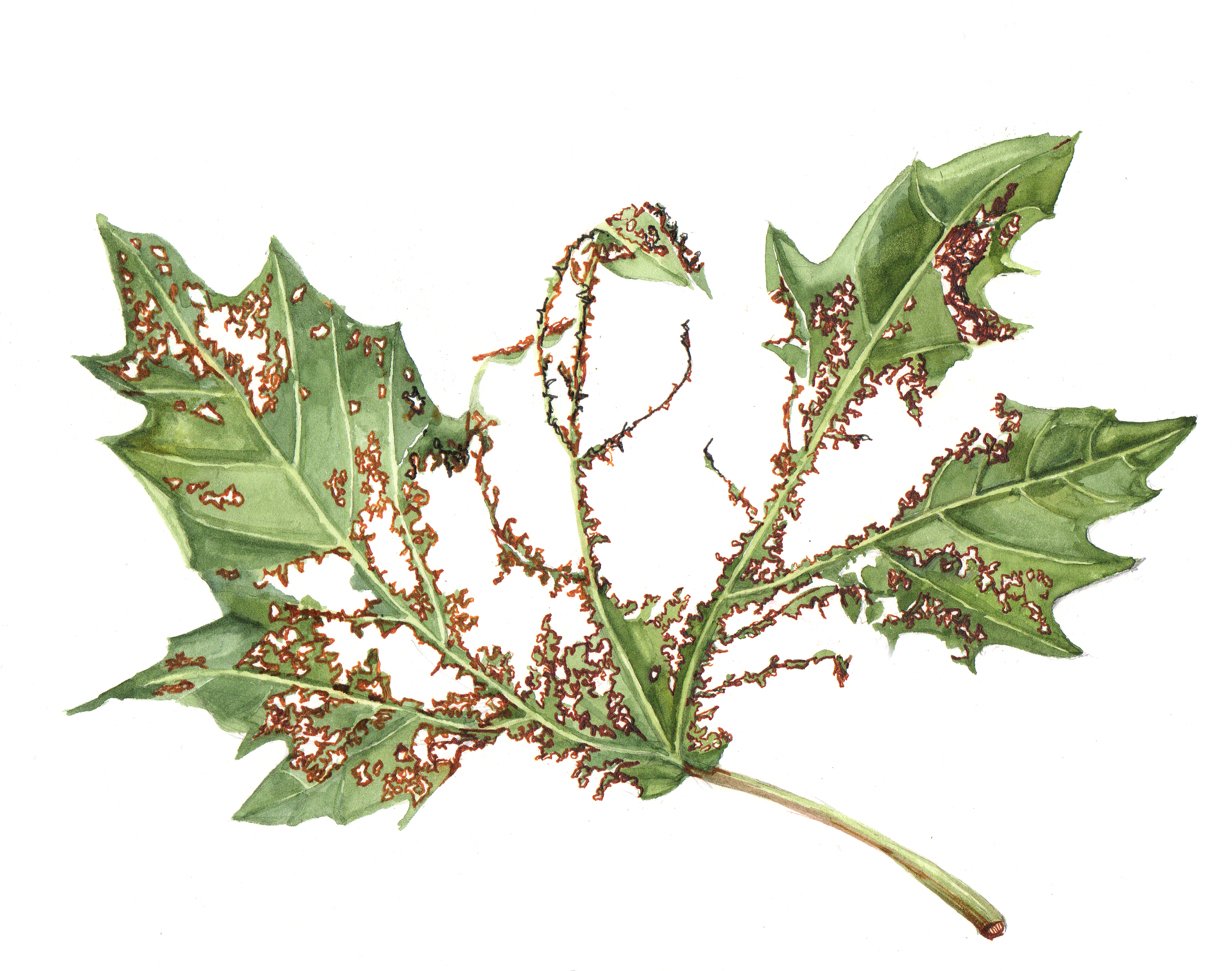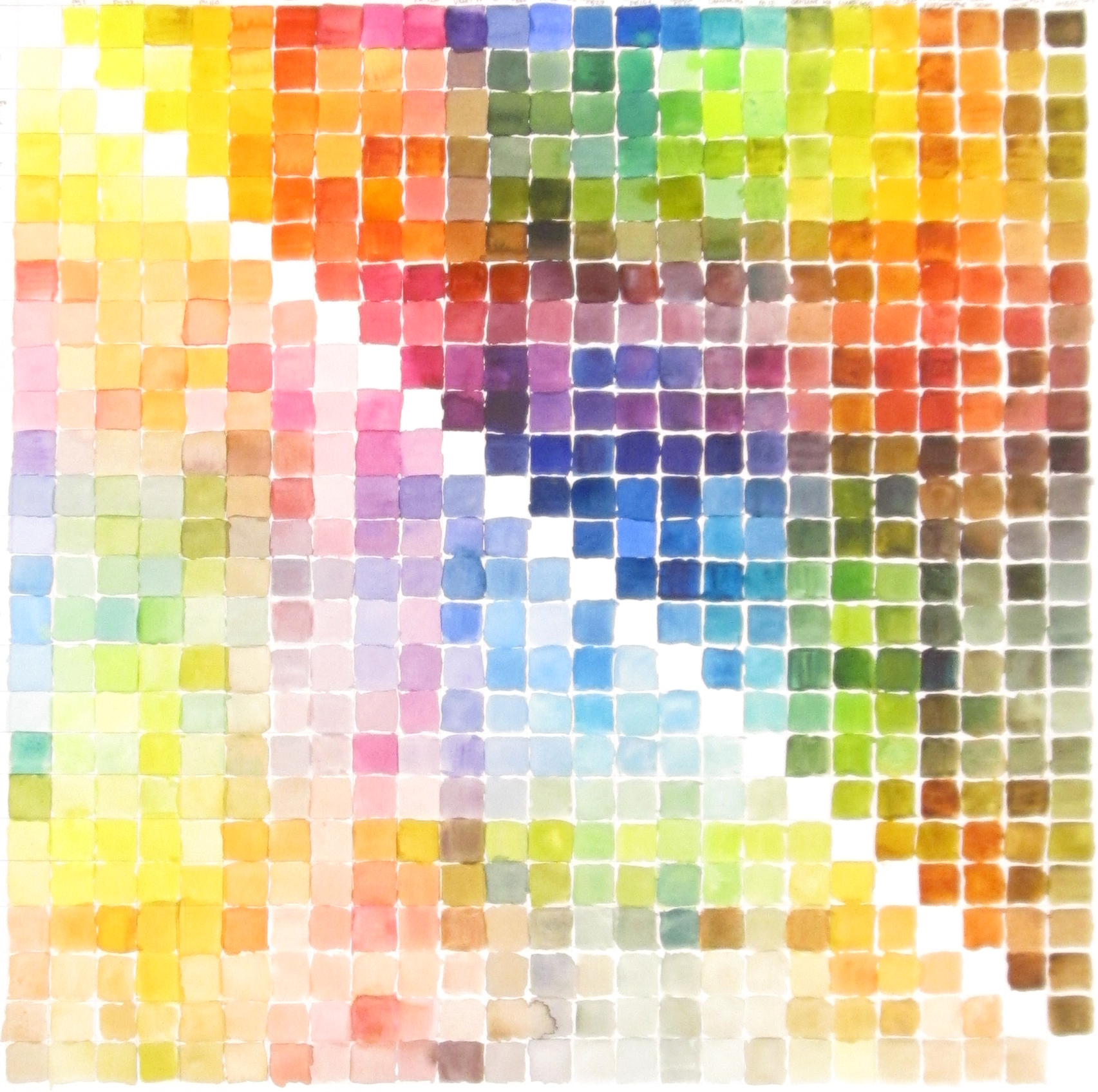Last year, I shared what I kept inside a few of my palettes. I wrote “palette tour” blog posts about my studio palette, my greatest hits palette and one of my travel palettes. Since my last palette tour post, I’ve changed how I use my palettes. This year, I’ve been dividing my time between my studio at the KW Artists’ Co-op and my home studio. In addition, I’ve also been sketching on location, carrying a fairly large sketchbook.
As a result, I’ve found myself carrying my studio palettes around a lot more. In the past few months, I’ve found myself wanting a double-duty palette. My perfect palette would be small and portable, but still contain a large range of colours. It would have my most-used pigments in full-pans. A few weeks ago, I settled on a solution that is nearly perfect. I call it the Atlantis palette (I name my travel palettes after space shuttles, because I am a big nerd). In this post, I’ll give you a palette tour of my Atlantis travel/studio palette.
The Atlantis Palette
Earlier this summer, I got my hands on a special edition rainbow Schmincke Tin. This tin is just like the standard tins sold for 24 half-pans, except prettier. I got mine as a Schmincke Horadam set from Wet Paint Art. This set came with a selection of colours by Jennifer McLean. After experimenting with the colours that came with the palette, I decided to instead fill the tin with my own favourite colours.
I replaced the insert with an insert from a Winsor Newton palette. This insert is nearly identical to the one that came with the Wet Paint set. However, because it is a few hairs wider, I can fit a row of half pans in the brush area in the middle of the palette. I also fit 7 full pans in each of the top and bottom rows, for a total of 25 pans in this tin.
I also modified my palette by removing the internal palette flap. This gives me a more compact palette with only the lid as a built-in palette. Whenever possible, I use a ceramic plate as a mixing surface. I sketched my palette and layout below:
Colour choices
In the studio, I depend on transparent, staining pigments. By using many layers of staining, transparent paints, I can achieve subtle variations across a painting. When sketching on location, I reach for more subtle colours or those with granulation. This helps me suggest the textures and colours of my subject with fewer, looser layers. Since the Atlantis palette is used as both a studio palette and a travel palette, I needed to include both types of pigments.
In my Atlantis palette, I chose colours that are very extreme. I chose staining, transparent colours that are extremely bright and assertive. I chose inky, dark shadow colours that are extremely deep and moody. The granulating earth tones in this palette have very dramatic granulation. These choices give me great flexibility while painting. Read on to the palette tour section to find out what paints I included!
Atlantis Palette Tour
This is the most important part of any watercolour palette tour post! I have listed my paint choices by pigment number first, followed by the specific brand and name I happen to have. I buy from a variety of brands. Mostly, these are what happened to be on sale when I was shopping for a given pigment. Feel free to look up the pigment numbers in my Pigment Comparison by Brand Spreadsheet and buy from a different brand!
I included the following paints in my Atlantis palette:
Yellows
- PY150 Nickel Azo Yellow by M. Graham (FULL PAN): My favourite yellow pigment by far. This transparent, staining yellow is perfect for mixing greens and on it’s own.
- PY175 Chromium Yellow Lemon Hue by Schmincke (HALF PAN): On those rare occasions I need a lemon yellow, I use this semi-transparent, staining one…
- PBr7 Raw Sienna by Da Vinci (HALF PAN): An earthy, granulating orange-yellow. This one scans exceptionally poorly, but appears as a yellow-orange earthy tone in real life.
- PO49 Quinacridone Gold (Old Formula) by Daniel Smith (FULL PAN): This is a transparent, staining gold ochre tone. PO49 is no longer produced but hues are available.
- PY153 New Gamboge(Old Formula) by Winsor Newton (FULL PAN): This is another discontinued yellow pigment. It is still sold as Indian Yellow by Daler Rowney.
Oranges and Reds
- PR242 Geranium Red by Schmincke (HALF PAN): An intense coral red, slightly more opaque than my usual preference but a very useful, vibrant colour on it’s own and in mixes.
- PO48 Quinacridone Burnt Orange by Daniel Smith (FULL PAN): PO48 is a transparent, non-granulating, alternative to Burnt Sienna.
- PO71 Transparent Pyrrol Orange by QOR (FULL PAN): This is a bright, transparent, non-granulating intense red-orange. It is extremely useful for mixing and on it’s own.
- PR178 Perylene Red by Schmincke(HALF PAN): This deep, intense candy-apple red is very transparent and not as garish as some mid-reds. It is a great paint for glazing.
Pinks and Violets
- PV19 Permanent Rose by Winsor Newton (HALF PAN): A bright, rosey pink, PV19 is transparent and staining.
- PR122 Purple Magenta by Schmincke (FULL PAN): Intense, staining and transparent hot pink. I favour a cyan-magenta-yellow triad and this is my magenta choice.
- PV23 Winsor Violet by Winsor Newton (HALF PAN): Another intense, staining, transparent colour. I don’t use this one often but it’s nice to have a true purple.
- PV55 Quinacridone Purple by Schmincke (FULL PAN): This is a warmer purple than PV23 above, but also vibrant, transparent and staining.
Blues and Turquoises
- PB29 Ultramarine Deep by Sennelier (FULL PAN): Ultramarine is not my favourite blue, but it is the brightest violet-blue on the market. It is transparent and granulating.
- PB60 Indanthrone Blue by Daniel Smith (FULL PAN): A deep, inky, intense midnight blue, useful for shadows and mixing.
- PB15:3 Phthalo Cyan Blue by Eventually Everything Mixes (HALF PAN): An intense, bright greenish blue. Transparent and staining
- PB16 Phthalo Turquoise by Winsor Newton (FULL PAN): An even more intense, greener greenish blue than the similar PB15:3. This paint is my choice for a primary cyan.
- PG50 Cobalt Turquoise by Schmincke (HALF PAN): A granulating, semi-opaque teal, almost neon on it’s own.
Greens
- PG7 Winsor Green Blue Shade by Winsor Newton (HALF PAN): A strong, bright, transparent blue-green, PG7 is a surprisingly versatile mixer.
- PY129 Azo Green by M. Graham (HALF PAN): Arguably, PY129 is more of a muted yellow. However, I use this transparent, staining colour to mix and glaze greens.
Shadow Colours
- Split pan containing PV29 Perylene Violet by Schmincke and PBk31 Perylene Green by Schmincke (FULL PAN): These two inky dark staining colours mix together to form a deep violet-black that has crept into nearly all my paintings lately. I mix these two colours so much I decided to put them in one pan together.
- PB15, PBk6, PV19 Indigo by Winsor Newton (HALF PAN): I filled the last spot with a multi-pigment indigo half-pan I had lying around, to offer another inky shadow option
Heavily Granulating Colours
- PB71 Zirconium Cerulean by Kremer (FULL PAN): This is the most granulating blue I have found outside of discontinued Manganese blue. It is a muted tone with crazy granulation
- PBr29 Hematite Brown by Eventually, Everything Mixes (FULL PAN): Hematite is a heavily granulating/separating ferrous natural pigment. This version is a cool dark brown.
- PR102 Iron Glimmer Violet by Kremer (FULL PAN): Another insanely granulating hematite paint, but this one is a deep violet-burgundy.
Future Changes to the Atlantis Palette
My watercolour palettes are always changing. This palette tour is just a look into what my palette looks like today. So far, I’ve been delighted with the flexibility that the Atlantis palette gives me. However, I expect to tweak this palette as I use up colours or buy new ones. In particular, I am looking forward to exploring more strongly granulating colours in different shades.
In another year or two, I may make a follow-up palette tour post sharing how my Atlantis palette has evolved!





